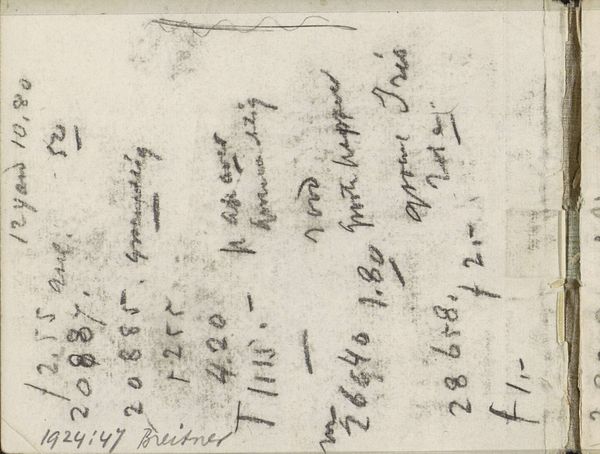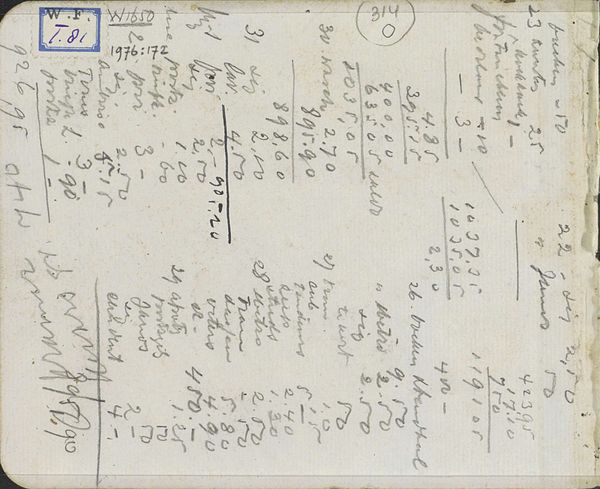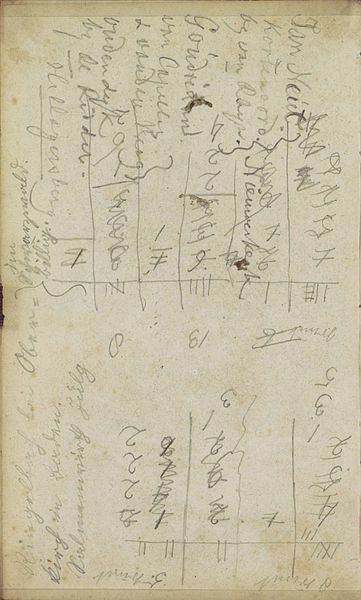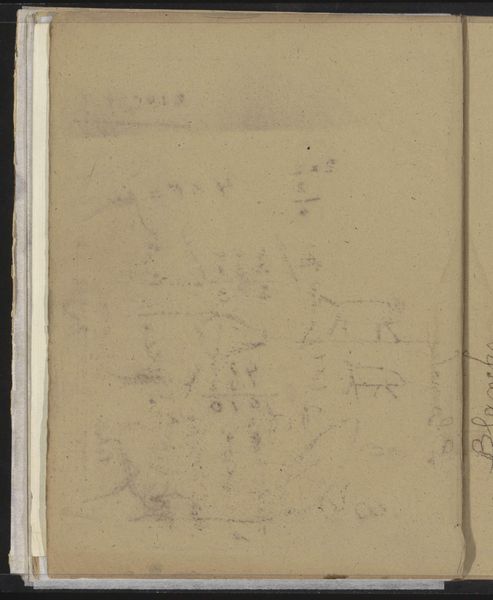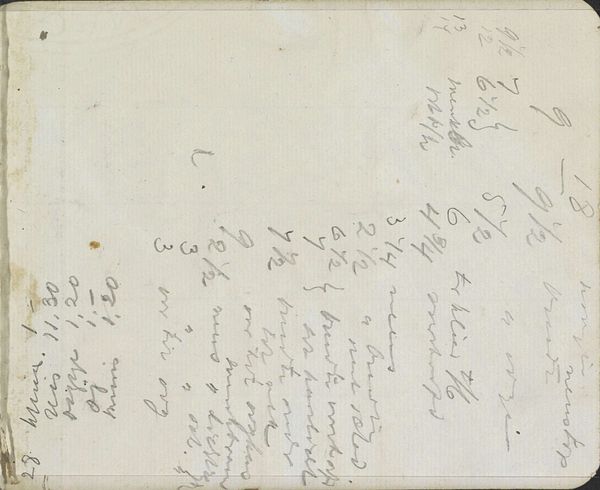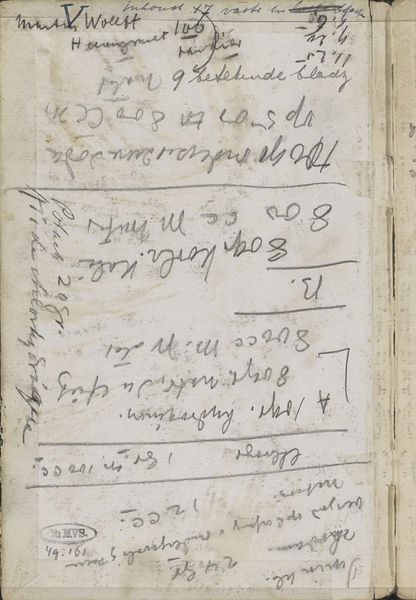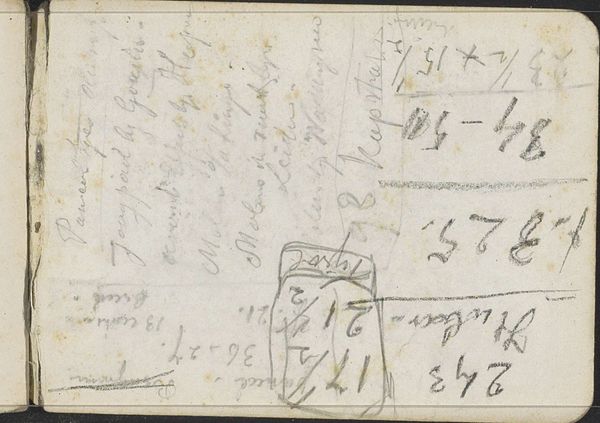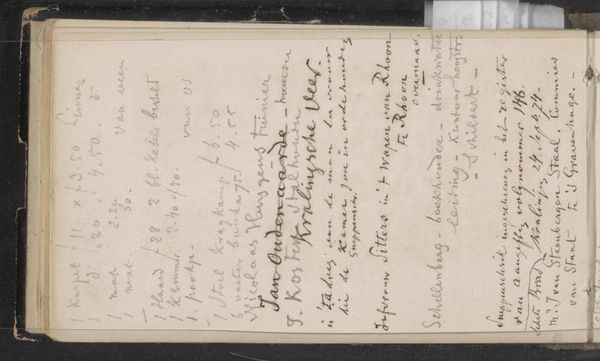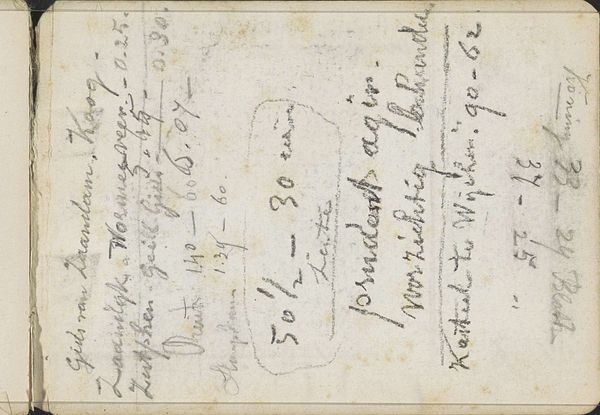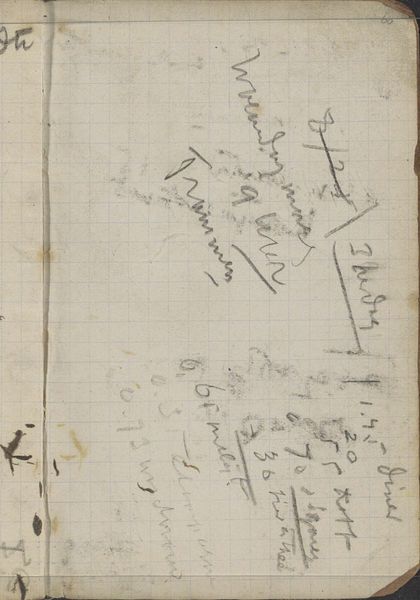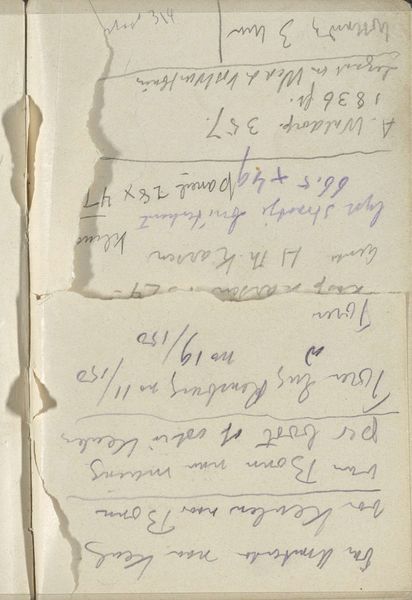
drawing, paper, ink
#
drawing
#
water colours
#
paper
#
ink
#
coloured pencil
#
geometric
#
abstraction
#
watercolor
Copyright: Rijks Museum: Open Domain
Curator: Annotaties, made around 1915 to 1920 by Willem Witsen, uses ink, watercolour, and coloured pencil on paper. It’s currently housed here at the Rijksmuseum. Editor: Looking at this work, it strikes me as more of a personal document than something intended for public display. The calculations and notes feel very intimate. What stands out to you, considering its historical context? Curator: You're right, this work is a glimpse into Witsen's private world. As a historian, I consider the societal shifts around Witsen that likely influenced this intimate form of expression. Remember, this was a time when rapid industrialization and urbanization were drastically changing the social fabric of the Netherlands. Artists, writers and thinkers sought new means of representation, of which Witsen experimented with in his abstract calculations and personal notes. Does the lack of overtly aesthetic content change your appreciation of it as "art"? Editor: It makes me rethink what constitutes "art" in the first place. We're used to seeing finished products, carefully curated for public consumption. But this offers something raw and unfiltered. How do you think museums shape our understanding of such pieces, ones not inherently intended for public view? Curator: Museums inevitably frame such works. By exhibiting this page, the Rijksmuseum invites us to consider the artistic potential within everyday life, challenging traditional notions of artistic creation and consumption. Do you find value in seeing an artist’s process so directly? Editor: Definitely! It humanizes the artist and demystifies the creative act. It also raises questions about value, authenticity, and the role institutions play in assigning significance. Curator: Indeed. Understanding the historical context—the social changes, artistic movements, and institutional forces—enriches our engagement with even seemingly simple works like this. Editor: Absolutely. This piece initially seemed like a random collection of notes, but understanding the period transforms it into a window into Witsen's world. Curator: And a reflection of the changing world he inhabited.
Comments
No comments
Be the first to comment and join the conversation on the ultimate creative platform.

